
A steam locomotive is a locomotive that provides the force to move itself and other vehicles by means of the expansion of steam. It is fuelled by burning combustible material to heat water in the locomotive's boiler to the point where it becomes gaseous and its volume increases 1,700 times. Functionally, it is a steam engine on wheels.

A tank locomotive is a steam locomotive which carries its water in one or more on-board water tanks, instead of a more traditional tender. Most tank engines also have bunkers to hold fuel; in a tender-tank locomotive a tender holds some or all of the fuel, and may hold some water also.
Rail transport terms are a form of technical terminology applied to railways. Although many terms are uniform across different nations and companies, they are by no means universal, with differences often originating from parallel development of rail transport systems in different parts of the world, and in the national origins of the engineers and managers who built the inaugural rail infrastructure. An example is the term railroad, used in North America, and railway, generally used in English-speaking countries outside North America and by the International Union of Railways. In English-speaking countries outside the United Kingdom, a mixture of US and UK terms may exist.

Main components found on a typical steam locomotive include:
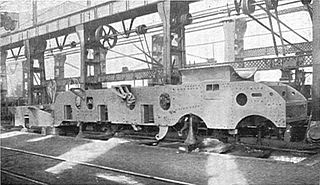
A locomotive frame is the structure that forms the backbone of the railway locomotive, giving it strength and supporting the superstructure elements such as a cab, boiler or bodywork. The vast majority of locomotives have had a frame structure of some kind. The frame may in turn be supported by axles directly attached to it, or it may be mounted on bogies (UK) / trucks (US), or a combination of the two. The bogies in turn will have frames of their own.

The GWR 4100 Class was a class of steam locomotives in the Great Western Railway (GWR) of the United Kingdom.

The SR West Country and Battle of Britain classes, collectively known as Light Pacifics or informally as Spam Cans, or "flat tops", are air-smoothed 4-6-2 Pacific steam locomotives designed for the Southern Railway by its Chief Mechanical Engineer Oliver Bulleid. Incorporating a number of new developments in British steam locomotive technology, they were amongst the first British designs to use welding in the construction process, and to use steel fireboxes, which meant that components could be more easily constructed under wartime austerity and post-war economy.

The Dean Single, 3031 Class, or Achilles Class was a type of steam locomotive built by the British Great Western Railway between 1891 and 1899. They were designed by William Dean for passenger work. The first 30 members of the class were built as 2-2-2s of the 3001 Class.

The SR Merchant Navy class is a class of air-smoothed 4-6-2 (Pacific) steam locomotives designed for the Southern Railway by Oliver Bulleid. The Pacific design was chosen in preference to several others proposed by Bulleid. The first members of the class were constructed during the Second World War, and the last of the 30 locomotives in 1949.

The South African Railways Class 19C 4-8-2 of 1935 was a steam locomotive.

The South African Railways Class 16E 4-6-2 of 1935 is a class of passenger steam locomotive.
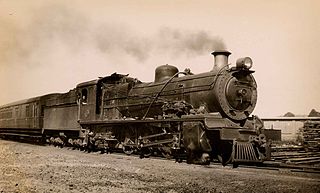
The South African Railways Class 16C 4-6-2 of 1919 was a steam locomotive.

The South African Railways Class 15A 4-8-2 of 1914 was a steam locomotive.

The South African Railways Class 12 4-8-2 of 1912 was a steam locomotive.
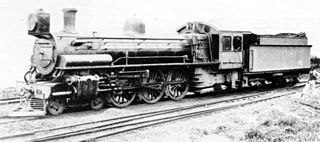
The South African Railways Class 10B 4-6-2 of 1910 was a steam locomotive from the pre-Union era in Transvaal.

The South African Railways Class 10A 4-6-2 of 1910 was a steam locomotive from the pre-Union era in Transvaal.
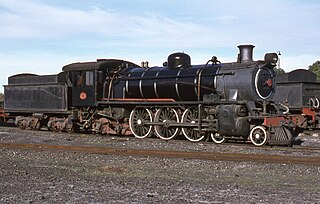
The South African Railways Class 5 4-6-2 of 1912 was a steam locomotive.

The South African Railways Class 3 4-8-2 of 1909 was a steam locomotive from the pre-Union era in the Colony of Natal.
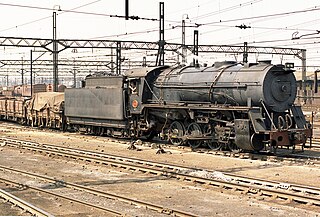
The South African Railways Class S1 0-8-0 of 1947 was a steam locomotive.

The South African Railways Class GM 4-8-2+2-8-4 of 1938 was an articulated steam locomotive.



















